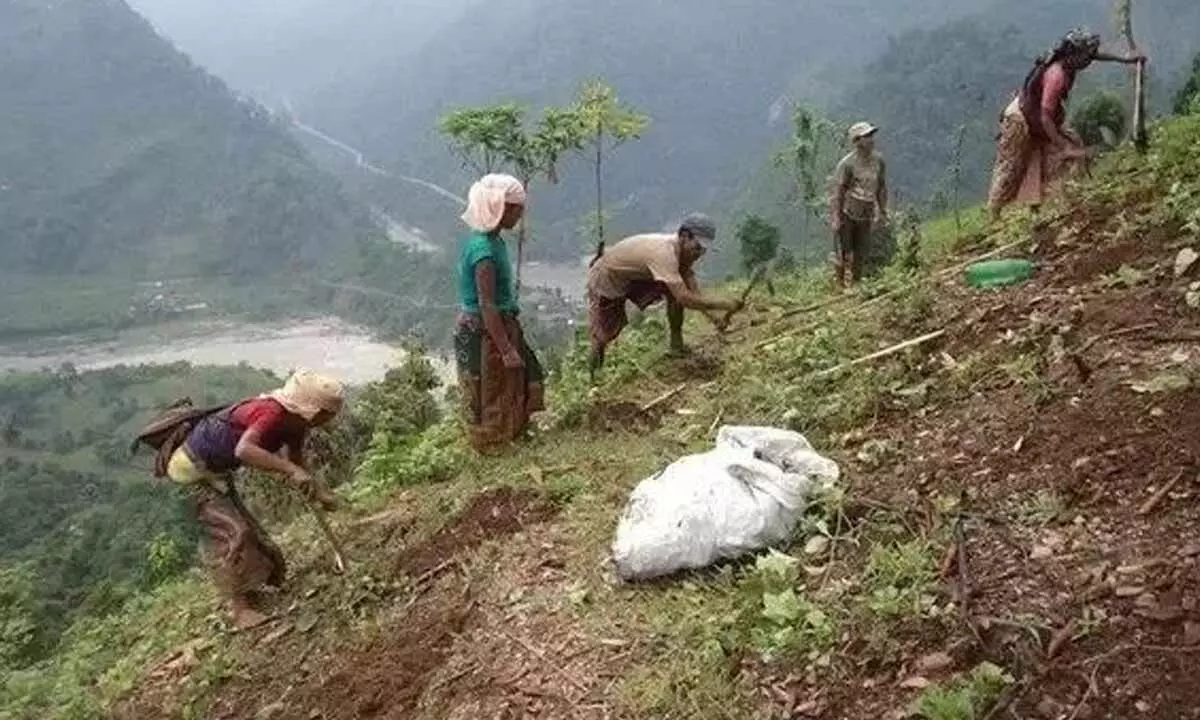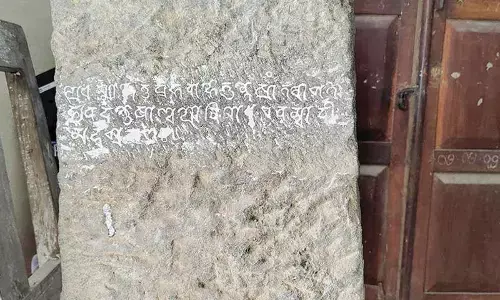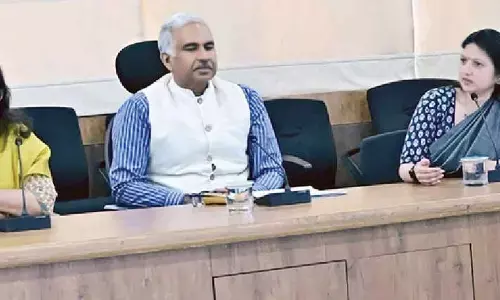Learn from traditional farming

Learn from traditional farming
Shifting cultivation is considered to be primitive and destructive to environment.
Shifting cultivation is considered to be primitive and destructive to environment. Yet, the process also known as jhum cultivation or swidden farming, a slash and burn method of cultivation, is still prevalent in the north-eastern regions of the country. Though jhum cultivation is practised in hilly regions across several states, almost 90 per cent of slash and burn agriculture takes place in the northeast.
As a young journalist, I had written a lot about the harm jhum cultivation does to the environment. Most research studies, and many prominent agricultural scientists, time and again voiced concern over the environmentally-depleting shifting cultivation practices, often terming it unscientific and ancient.
Since the northeast tribes continue with the practice despite being told how harmful it is, I was always curious to find out why and how the tribes still find the practice useful. This meant that I had to travel to a site of jhum cultivation to know why some farmers find it not only economically viable but also environmentally regenerative.
Finally, last week I travelled to Khonoma village, about 20 km from Nagaland capital Kohima. Ironically, the village I visited to see jhum cultivation had already been hailed by the Chief Minister some years back, as "Asia's Greenest Village."
The village's outer limit, spread over 123 square km, had a lot to show by way of conservation methodologies it had adopted, of the immense efforts being made to promote and protect natural resources, regulate wildlife hunting and also to keep the village clean.
Walking up to see where jhum cultivation was being practiced, I found a hill slope cleared of the vegetation and the Alder trees (of genus Alnus), chopped at a height of about five to six feet, still standing. While the wood from the trees was neatly hacked, collected and stored at various corners where these could be easily stacked, the dry leaves and twigs were being burnt at various places along the slopes. On the slopes, with the loose terraces built soon after the forest vegetation had been cleared, a number of crops were being cultivated. When I visited the site, the seeds were just about emerging.
Knowing that slash and burn agriculture is a traditional method of cultivation where the forest lands are first cleared, crops are grown for a couple of years, and then again the lands are left abandoned to help them regain soil health and nutrition, I didn't find the practice to be in any way unscientific or environmentally destructive.
Take for example, that instead of cutting down Alder trees from the base, these were chopped at a height where the animals could not eat away the new branches that grow. Moreover, the farmers were aware that being leguminous, the Alder trees are very precious. These trees add nitrogen from air to the soil and therefore are crucial to enhance soil fertility. The trees were therefore being carefully protected.
Farmers told me that the dry slash and wild twigs being burnt was helpful in improving soil by getting rid of harmful pupae and micro-organisms. For the next two years, seeds of different crops will be sown in the cleared slopes; the tribe will then abandon this jhum and move to some other forest slopes. The law allows them to cut down trees from the neighbouring forest lands, but only those that are a hindrance to sunlight availability for the growing crops. On being asked whether the crops they harvest would be enough to keep the household economics going, every farmer I met was in agreement.
"First, we get firewood, and secondly since we are undertaking organic cultivation, we get enough healthy food for the family," said one while another farmer added: "We do have enough surpluses from the multiple cropping we do that we can take it to local markets."
Interestingly, the UN Food and Agriculture (FAO) in one of its studies (FAO Soils Bulletin No: 53) found the traditional method of cultivation to be in tune with the ecological balance with the environment. It says that swidden farming methodology does not irreversibly degrade the soil resources provided a sufficient length is allowed for soil restoration.
In my understanding, what is important is to ensure proper field management that takes care of trees, soil and biodiversity. If these three criteria are fulfilled, many civil society leaders believe there is nothing wrong with jhum cultivation.
On the other hand, several other studies show that with increasing population pressure, the length of the fallow is getting reduced. It should ideally be in the range of 10 to 20 years depending on the soil restoration ability of the region. Farmers in Khonoma village tell me that the fallow period is between seven and 10 years while earlier it was in the range of 14 to 17 years.
While a lot of scientific criticism points to degradation of soil fertility, increased soil erosion, reduced surface run-off and therefore call for replacing it with sustainable intensification, I think the point being missed is that the market-led intensive farming systems that have been introduced over the years for crop production have led to expansion of monocultures, which have not only exacerbated soil fertility devastation, sucked the groundwater dry but have also cumulatively added to Greenhouse Gas emissions. If this is the kind of wreckage that formal agricultural research and education system has led the world to, it makes sense to learn from the traditional societies and try to improve the existing farming system they are comfortable with.
It is primarily because of the resistance from the scientific communities and the futile search for alternatives; that even attempts at finding viable alternatives to shifting cultivation have only met with limited success (Encyclopedia of Soils in the Environment, 2005).
In other words, the farmers believed and did what they thought was right. But let's be clear that markets were not happy with jhum cultivation because these dominant farming systems in the hilly regions across the globe have stayed away from being part of the value chains they prescribe. Simply put, the slash and burn farming system is embroiled in its own politics. It is time to look beyond what the transformation in land and labour relationship that market-led economics impose.
Nevertheless, I would go by what the World Food Prize laureate Prof Rattan Lal had suggested sometime back.
Responding to the changed natural and anthropogenic perturbations, his suggestion was to make payments to farmers for sequestration of carbon and other ecosystem services. This will encourage and promote best management services and strategies.
In a way this is a win-win situation – both for the farmers as well as for restoring soil fertility and in turn safeguarding the environment. But only, if in the name of sustainable intensification, policy makers do not end up forcing chemical fertiliser and pesticides down the throat of gullible farmers.
(The author is a noted food policy analyst and an expert on issues related to the agriculture sector.
He writes on food,
agriculture and hunger)

















